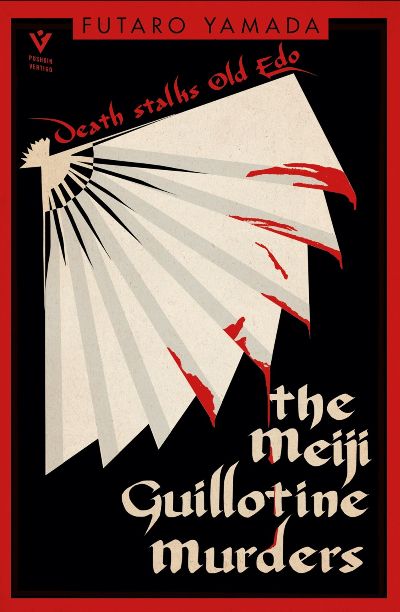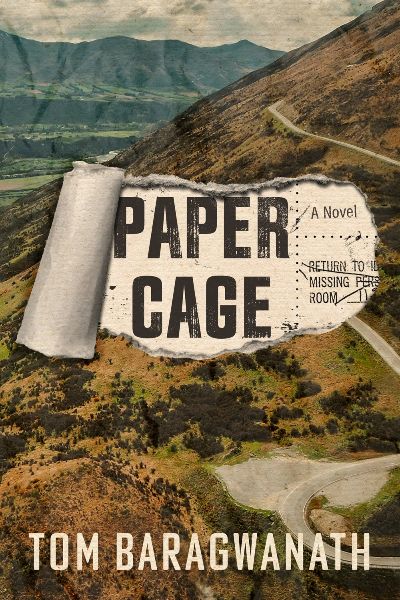2019 bookends this murder mystery. In that year, student KC, a trans man, is the weary caretaker of a college dorm, picking up after his lazy peers and saving them from their drunken worst selves. The dorm he works in has a rumor-clad oddity: a young female student was killed there years ago, and the true-crime frenzy has made the building a magnet for professional and amateur sleuths. Their work sends us back to just before New Years Eve 1999, where we meet the victim, Karlie Richards. Karlie seems to have it all but, like everyone she meets, has dragged a weight of hopes, loves, and past mistakes to her new life in college. It’s the pre-#MeToo era as Karlie faces what turns out to be her final days, and readers will love to hate the professor who has a way too close relationship to his female students, and long to jump into the pages to warn the young women away. But there’s nothing we can do as Karlie’s doomed world comes to life and Pearson skillfully introduces several more characters who could have killed Karlie and more reasons why they would have done so. The divergent lives of the haves and have nots in college towns, and the experiences of evangelical students taking their first foray into a more secular world, are starkly painted in this dark debut novel by an author to watch.
Mystery & Detective
A tale both churlish and charming, in which Shelley House, a grand but dilapidated old mansion, is scheduled for demolition, forcing the residents to put aside their antagonism and fight the common enemy: the construction developer. Twenty-five year old Kat, of pink hair and punkish demeanor, has just rented a room in Shelley House and found a job as a dishwasher, convinced she’ll stay for just a couple of weeks. Why is she in town? It’s hard to say, except she partially grew up here with her loving grandfather, away from her substance-abusing mother, and something is drawing her back. Across the floor lives seventy-seven-year-old Dorothy Darling, a retired teacher who spends her days like Dickens’s Madame Defarge, recording the goings on of her neighbors. Both Kat and Dorothy are propelled by powerful secrets that stretch back years, and that only now—thanks to the corrupt cops and a vicious construction developer—they must expose to the light of day. With poignant characters and a richly drawn community, this is a novel readers will not soon forget.
“Where there’s pain, there’s blame,” which is why Syd Walker lives far from her Oklahoma roots and hasn’t seen her family in years. As a teen, Syd; her sister, Emma Lou; and her best friend, Luna, were attacked by a pair of masked Tsigilis, the Cherokee word for devils. Syd, who is Cherokee, shot one of them dead, but his gang killed Luna and her parents. She can’t forgive herself for not saving Luna, and the small town of Picher can’t decide, even all these years later, what she should have done that night. That past is now coming back with a vengeance as the epidemic of missing young Native women now seems to have swallowed Emma Lou, and the body of another young woman has been found, with Syd’s old work ID card in her mouth. Syd’s return home immerses the reader in the difficulty of returning to a place and people you’ve outgrown, the bitter choices we must sometimes make—Syd is now an archaeologist for the same Bureau of Indian Affairs that has cost her people so much—and the strength that love and loyalty bring. Lillie (an enrolled citizen of the Cherokee Nation of Oklahoma) adds to the story details of Native history and current day life, with sardonic wit both tempering and highlighting the pain that pierces both times. A dark and propulsive thriller for fans of Kelly J. Ford.
This series debut is sure to delight fans of traditional mysteries as well as those who prefer a good CWC (cozy with corpses). Successful author Eleanor Dash is off on a publicity tour of southern Italy with a rather motley crew of fellow mystery writers; her sister, who is also her manager; a busload of fans; two ex-lovers; a stalker; and a few hangers-on. No sooner does the reader pour a refreshing limoncello than there is an attempt on one of the characters’ lives: that of Charles, one of the exes and a rather suave ladies’ man whom Eleanor has featured in her novels and who receives royalties from her books (what? it’s complicated). In fact, Eleanor would love nothing more than to see Charles dead, although she’s more likely to kill him off in her next book than in real life. As the group ambles about Sorrento and Positano—having fantastic meals and dishing on the publishing industry while managing to dodge the occasional murder attempt—we are treated to the best feature of the book: Eleanor’s witty, droll, and sophisticated voice, on display in dialog, interior monologue, and, best of all, the many footnotes that pepper the text. As roles are upended, and the crime writers become detectives, we also learn more about Eleanor’s personal life, from her complicated relationship with her sister to her remaining passion for Oliver, the other ex. Perfect for fans of The Magpie Murders; the Finlay Donovan series; and Only Murders in the Building.
Noted for her historical and speculative fiction (The Spanish Bow; Annie and the Wolves), Romano-Lax ventures into suspense territory with this atmospheric, entertaining thriller about a grieving mother investigating her daughter’s mysterious death. Three months after her 23-year-old daughter was presumed to have drowned in Lake Atitlán, Central America’s deepest lake, Rose arrives in Guatemala. Although a six-week search failed to recover Jules’s body, Rose is unsatisfied with the official investigation’s conclusion. She wants to learn more about her daughter’s final hours and why Jules, who had a lifelong fear of water, was last seen swimming in the lake. A key but uncooperative witness is Eva Marshall, the best-selling memoirist and Jules’s literary idol, for whom the aspiring writer had just started working as a personal assistant before her disappearance. Frustrated with Eva’s refusal to schedule a visit or a phone call from Rose and her ex-husband Matt, a determined Rose signs up under her maiden name for an upcoming memoir-writing workshop taught by the charismatic Eva at her Guatemalan lakeside retreat. “Rose has no ambitions whatsoever as a memoirist, not even the tiniest desire to be published.…But you do what you must, after you’ve already tried everything else.” Despite the glamor and natural beauty of her surroundings, Rose senses something off both in Eva and in how she runs her workshop. Did Jules uncover a dark truth that led to her death? While crafting a taut tale of suspense, Romano-Lax also turns a gimlet eye on the sometimes-toxic writing-workshop industry and the social media demands that turn authors into marketers and branders. In spite of an epilogue that feels a bit forced, the author has written a satisfying tale about the sometimes-strained but always unbreakable bonds between mothers and daughters.
French made her name in crime fiction by exploring the underbelly of Irish life in her Dublin Murder Squad series, which blew the lid off any leprechauns in the mist-type views of Ireland. Here the little people are dragged back out, but for good reason: the locals in the west of Ireland mountain village of Ardnakelty lay the superstitions and rural naivete on thick when an Englishman comes to town and promises to make them rich. Meanwhile, their real game is, as the book says in a different context, “offensive and defensive weapons as well as broad-spectrum precautionary measures” (I’m from an Irish mountain area myself and French has us pinned to a board like a butterfly). Playing up the stereotypes is working great, with the Englishman, Mr. Rushborough, lapping up stories of his sainted ancestors while the locals plan to scam him. Come to find out, it’s not a one-sided game. There are three great characters here: Johnny Reddy, a local huckster who left his family for London and is now back expecting a hero’s welcome, with Rushborough in tow; Trey, his daughter, who has started to make an honest name for herself as a talented carpenter, and who is seething with rage against her father and the world; and Cal Hooper, a former Chicago cop who’s lived in Ardnakelty for a few years and is having none of Johnny’s bluster. French fans will love reacquainting themselves with these characters, whom they met in The Searcher (2020); newcomers to the author or this series will be glad they tried this emotional saga.
Katharine Wright, a teacher when we meet her in 1903, has her work cut out at home as well as at the high school where she teaches Latin and Greek (but not advanced classes, because “we can’t have a woman teaching upperclassmen”). At home, her father has forbidden her to marry, as her mother has died and he and his sons need a woman to take care of them. Two of those sons are Wilbur and Orville, who at the outset of this informative, fun, and absorbing mystery are in North Carolina attempting to be the first to achieve powered, heavier-than-air flight. After the triumphant telegram, the mysteries start: accompanying his sister to a society dinner, Orville has his jacket stolen, and in its pocket are the men’s notes and drawings of their not-yet-patented work. At the same event, a guest is found stabbed in the heart (you can guess which crime concerns Orville more). The siblings must get to work at finding the papers before Wilbur knows they’re gone and finding the killer before an innocent teen is tried for the crime. The few details about aviation here are interesting and easy for lay readers to navigate; the brothers’ agony over their ideas being stolen is palpable and more germane to the plot. Yet more central, happily, is their sister, the only Wright sibling to attend college and “a teacher, feminist, scholar, and extrovert,” per the author’s note. While waiting for this, try another aviator-related crime novel, Mariah Fredericks’s The Lindbergh Nanny.
We’re in New York’s beautiful Hudson Valley where Jess and her business partner, Kat, are opening the Pearl, a B&B in their hometown that they’ve been working on, and investing in, for months. Headlining the opening is Lars, an ex-boyfriend of Jess’s who went on to win an American Idol-like reality competition and has morphed into a full-blown celebrity (and a bit of a jerk). He’s back home to help kick the celebrations into high gear, and generate plenty of press. Except when Lars’ stepdad-now-manager is found drowned, Lars becomes the prime suspect, the press starts acting more like TMZ than E! News, and the guests quickly get sick of being under lockdown. To save the weekend, their reputation, and keep Lars out of jail, Jess goes into overdrive, investigating every possible lead. Featuring a whole lot of twenty-somethings, plenty of integration with technology, lots of lovemaking, and a very busy bartender, this is a cozy for and about a new generation of readers—but appealing to most everyone. A charming town, quirky friendships, and plenty of intrigue will keep readers on their toes.
It’s 1869 in the newly renamed capital of Tokyo, a year after the political revolution known as the Meiji Restoration overthrew the ruling Tokugawa shogunate that kept Japan in feudal isolation for over 200 years. It’s a time of rapid social change and political turmoil; not everyone is happy with the new government’s policy of Western modernization. Law enforcement, such as it is, is represented by five corrupt rasotsu (police officers) who are more interested in lining their pockets than in protecting the public. But they are reluctantly enlisted into the services of two chief inspectors from the Imperial Prosecuting Office as they investigate government corruption and a string of impossible-seeming murders. One inspector is the elegant and handsome Keisherō Kazuki, who cuts an odd figure in his old-fashioned clothes that make him look like “a courtier who had stepped out of the Heian period.” He is also obsessed with making the new government a just one and has imported a French guillotine as a more humane means of execution. His older colleague,Toshiyoshi Kawaij, is more down to earth, but he too is an outsider. The two men share a friendly rivalry as they probe several gruesome, supernatural-like killings. They are aided by Esmeralda, a beautiful Frenchwoman who followed Kazuki back to Japan (much to the dismay of Kazuki’s fiancée and her father) and who now is studying to become a miko, a Shinto shrine maiden with shamanistic powers that enable her to speak for the dead. How these crimes connect to the book’s title is resolved surprisingly and cleverly in the final section. Although the plethora of Japanese names can at first be confusing (a glossary of Japanese terms would also have been helpful), Karetnyk’s stylish and witty translation (there’s a lot of humor in this dark, bloody tale) quickly draws readers into Yamada’s atmospheric world. And Kazuki and Kawaij (a historical figure considered the father of the modern Japanese police force) make for a memorable sleuthing duo. Noted for his ninja novels, Yamada has written an engrossing, twisty tale that will appeal to fans of well-designed puzzle mysteries and international crime fiction with a fascinating historical setting.
Rural New Zealand police records clerk Lorraine (Lo) Henry isn’t supposed to get involved in cases. But when children in her town start to disappear, and it’s clear that she knows more than the officers about local families and goings on, and cares more than her colleagues do, the big-city cops who’ve been deployed ask her to step in. It’s not a popular move, but Lo is determined, especially after her nephew becomes one of the missing. Complicating the investigation is town politics that pits poorer Maori residents against white or “Pakeha” ones. Family histories, the drug trade, and gang activity also muddy the case and keep Lo busy (“everything feels pushed together like too much washing in the machine”) as she doggedly tries to find the children. Things move fast but reach calamitous speed in the last quarter of the book, a gripping showdown leading to a last line that won’t leave a dry eye. Baragwanath’s language throughout just won’t stop with a verisimilitude that deeply immerses readers in small-town life and this particular town’s warmth, sadness, and terror. Paper Cage won the Michael Gifkins Prize for best unpublished novel by a New Zealand author and has been shortlisted for both the Ned Kelly Award for Best International Crime Fiction and the New Zealand Ngaio Marsh Award for Best First Novel. It’s no wonder.










